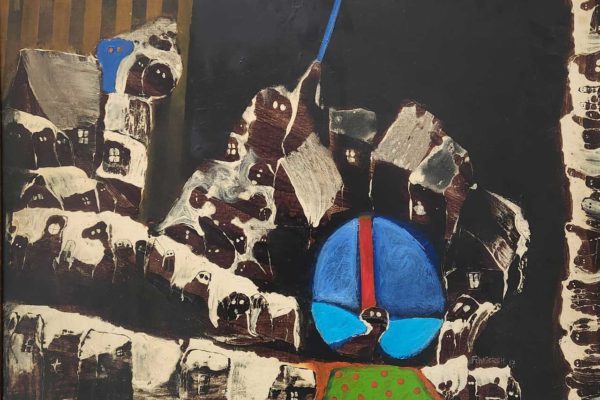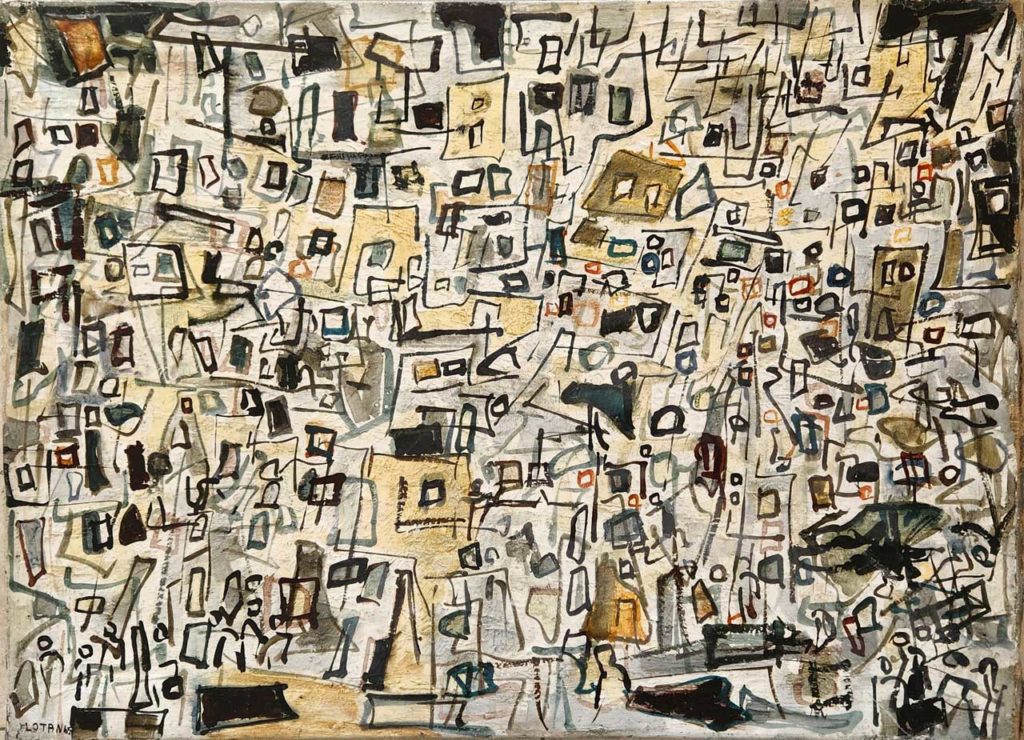Oded Feingersh / Moshe Kupferman / Yona Lotan
2 January - 1 March 2026
In parallel with the second stage in the exhibition triptych dedicated to Maren Ruben, the MACT/CACT is devoting two rooms to the works of the artists ODED FEINGERSH (1938), MOSHE KUPFERMAN (1926-2003) and YONA LOTAN (1926-1998).
These artists belong the generation of the modern classics: born in the first half of the last century, they made a substantial contribution to the development of post-war art, and not only in Israel, playing their part in a much more extensive community of art production, where they were flanked by such figures as Naftali Bezem, Moshe Gershuni, Aharon Kahana, Raffi Lavie, Uri Lifshitz, Lea Nikel and Igael Tumarkin, to name just a few of the more significant of their peers.
This generation of artists, who contributed to laying the foundations of Israeli art starting out from the great European schools, Paris in particular, also constitute a cross-section with strong links to the diaspora as an element of cultural experiences. Many of them were in fact born in various different parts of Europe, as in the case of Kupferman, a native of Poland, or Lotan, who was born in Lithuania; a characteristic of their experience that is fundamental for these artists.
From a purely artistic and linguistic standpoint, each of these three artists in his own way developed a stylistic approach that was to leave a vigorous mark on all post-war production, indicating a desire to turn over a new leaf, and not just in cultural terms.
Practically throughout his life, Moshe Kupferman (1926-2003) analysed and developed on the language of abstraction, working on the perception of colour and the elaboration of colour fields, (un)conscious of the influence exerted by the stratification of European painting over the centuries. Already active in the area of abstract and the Informel in 1960, it was however only from 1970 that Kupferman went beyond gesture, thus defining until his dying day his idiom, in which the gesture itself encapsulated a vigorous elaboration of sign and colour, almost as a musician comes into physical contact with his instrument. The works on show by Kupferman in fact date from 1973 until 2000, a handful of year before he passed away.
Yona Lotan (1926-1998), a native of Lithuania who emigrated to Palestine in 1936, has a rather different personal and professional story. Trained as an engineer, from 1959 onwards – and for the rest of his life – he devoted his attentions to painting, a field in which he was self-taught. Paris certainly exerted a relevant influence on his art, which passed without clamour from the quite elaborate figuring of the early sixties to forms of abstraction of objects, though without ever plunging thoroughly into complete abstraction, whether of style or of manner. His pairs of lovers and his natural landscapes, but above all his cityscapes, like the sheer impetus of his enormous output, make him a truly eclectic artist who transcends any academic orthodoxy.
Oded Feingersh (1938) offers further evidence of strongly western culture, whose language is also the offspring of his day. The playful, theatrical outlines of his generation achieve a pleasant balance between art and illustration, hinting at the evolution of Pop Art that was then still to come in the sixties, whose playful characteristics are signs of an open mind and a real sea change. Feingersh’s practice does not turn its back on History, but he seeks and finds correspondence also with the Surrealism of a Magritte or a Delvaux. If not exactly poetic, Oded Feingersh is almost a designer of fables and at times a curious metaphorical illustrator of human existentialism.
Mario Casanova, Bellinzona, 2025.
Translated by Pete Kercher
Yona Lotan (1926-1998), Urban Landscape, 1965. Oil on canvas, signed and dated lower left, 73 x 100 cm. Private collection, Switzerland.
Where
MACT/CACT
Museo e Centro d’Arte Contemporanea Ticino
Via Tamaro 3, Bellinzona.
Opening hours
Friday, Saturday, Sunday
2 p.m. – 6 p.m.
Entry
CHF 6.00



